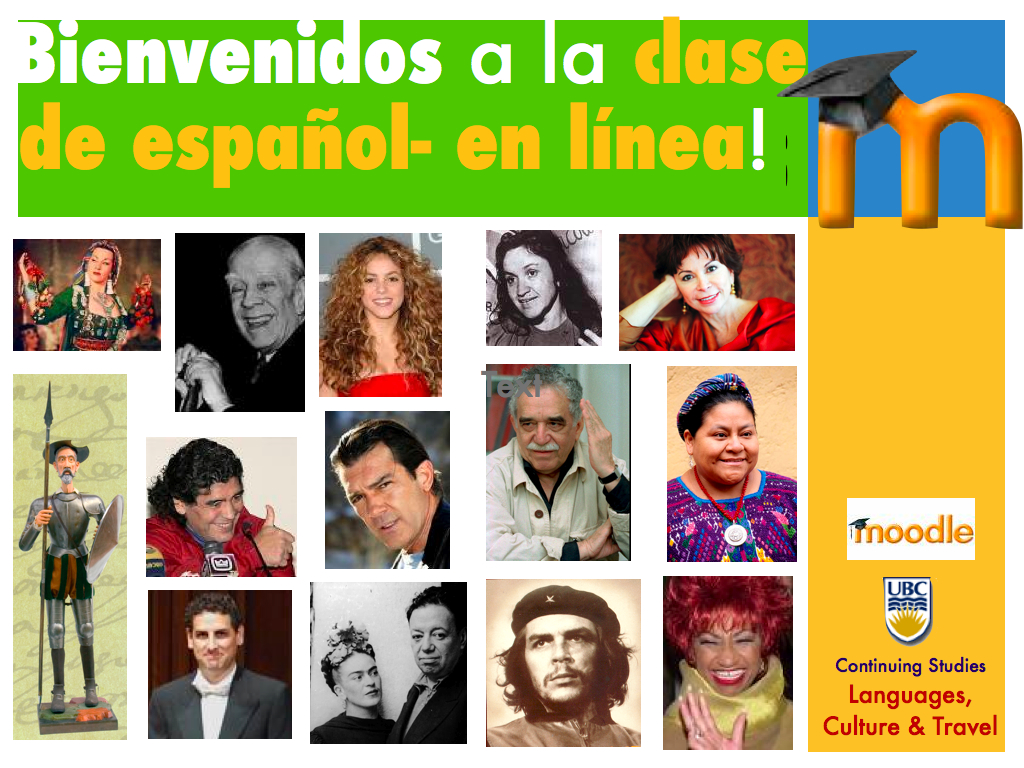
The project is about designing an online non-credit course for teaching & Learning Spanish as a foreign language for adults. The course will be part of the “Culture Language & Travel” program, division of the UBC Continuing Studies.
There was a quick approach to options like Blackboard, Desire2Learn, Angel Learning, Moodle and Sakai Project to choose the Learning Management System (LMS) for the course. Though, the tendency was using an open source program because commercial systems are often expensive to purchase and maintain (Perkins, M. & Pfaffman, J., 2006). Moodle was selected against Sakai basically for the instructors’ experience.
Consequently, the guidelines of the SECTION framework by Bates and Pool (2003) were used to decide if Moodle would be a good fit for the Spanish online course.
Students
Prospective students have been through higher education and they are in the workforce. Their average age is 40 years old, they have access to high speed connection to internet. They are independent learners with hectic schedule, highly motivated; and the idea of taking a course delivered entirely online is likely to be attractive.
Ease of Use and reliability
Moodle doesn’t require a special software program just web-browser (Perkins, M. & Pfaffman, J. 2006). In the other hand, the UBC Continuing Education has its own server with a dedicated technical support.
Cost
“As a general rule of thumb, LMS can cost about $ 224,000 for 10,000 students during a single year (or about $22 per learner)” (Pannetieri, 2007). Moodle not only provides a set of features similar to those of the competitors but it is often easy to use. (Perkins, M. & Pfaffman, J., 2006).
Teaching & Learning
The course has a clear constructivist approach. Moodle as an intuitive platform provide a number of ways to enhanced learning.
Interactivity
Bates and Poles (2003) states that there are two contexts for interaction: individual (learner with the material ) and the social activity, as the interaction between two people. Moodle allows these two contexts for interaction. However, because of lacking of face-to-face interaction, videoconference and related tools are being planned.
Organizational Issues
The Languages & Cultural and Travel program counts with a technological system that makes Moodle feasible and practical. Instructors will be trained and prepared to deal with technical issues that may encounter while developing teaching materials.
Novelty
A full 100% online Spanish course offers a solution for many people who need or would like to study the language, but it’s very difficult to access to a qualified institution.
Speed
The teaching material to be created for Moodle could be relatively easy to update. Indeed, it’s an important criteria on developing the materials, due to some activities are design with current news.
Conclusion
Moodle seems to be a good fit and sustainable for the Spanish online course. However, it’s clear that LMS does not guarantee the success. We have to keep on developing proper instructional material to achieve the outcomes.
References
Bates A. W. & Poole, G. (2003). A Framework for Selecting and Using Technology. In A.W. Bates & G. Poole, Effective Teaching with Technology in Higher Education (pp. 75-108). San Francisco: Jossey-Bass. 4.
Boyes, J., Dowie, S. & Rumzan, I. (2005). Using the SECTIONS Framework to Evaluate Flash Media. Innovate Journal of Online Education, 2(1). Accessed online 12 March 2009 http://innovateonline.info/index.php?view=article&id=55&action=article.
Panettieri, J. (2007). Addition by subtraction. University Business, August, 58-62. Accessed online 11 March 2009. http://www.universitybusiness.com/viewarticle.aspx?articleid=845
Perkins, M. & Pfaffman, J. (2006). Using a Course Management System to Improve Classroom Communication. Science Teacher, 73(7), 33-37.